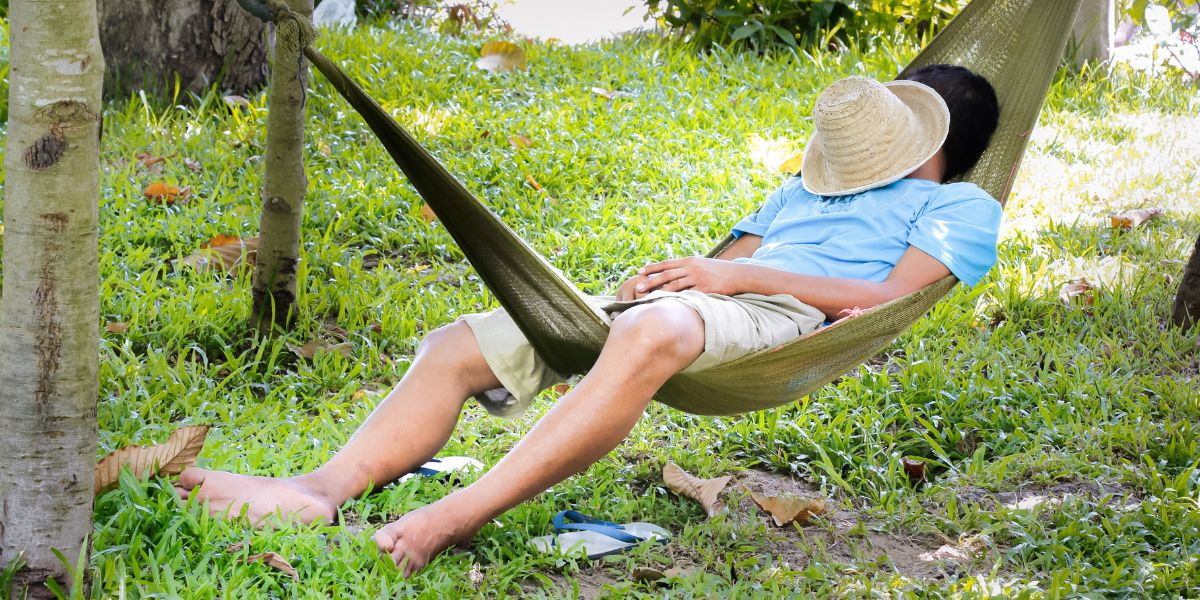
When relaxing in a hammock, preventing swaying can be a bit of a balancing act. It's crucial to consider factors like the suspension angle and secure anchor points. However, there's more to it than just the setup. Understanding how your body position and movements can affect the sway is key to achieving that tranquil hammock experience you crave. So, next time you settle into your hammock, keep in mind these subtle adjustments that can make all the difference in enjoying a stable and relaxing time outdoors.
Proper Hammock Hanging Technique
To ensure a stable and comfortable hammock experience, always remember to securely attach each end of the hammock to sturdy anchor points. This step is crucial in preventing unnecessary swaying or even accidents while you relax. When choosing anchor points, opt for trees with a trunk diameter of at least 6 inches to ensure they can support your weight.
Remember to position the hammock straps at a height that allows for a gentle curve when you lie in the hammock; this helps distribute your weight evenly.
Additionally, make sure the distance between the anchor points matches the length of your hammock to prevent excessive sagging or tightness. A good rule of thumb is to have a suspension angle of around 30 degrees for optimal comfort and stability. Before settling in, give the hammock a gentle test to ensure it holds your weight without any issues.
Adjusting the Hammock Suspension
When adjusting the hammock suspension, ensure the anchor points maintain the recommended 30-degree suspension angle for optimal comfort and stability. This angle helps distribute your weight evenly, preventing swaying and ensuring a more relaxing experience. Adjust the length of the suspension straps or chains to achieve this angle.
Inspect the anchor points to ensure they're secure and can bear the weight of the hammock occupant. Use sturdy materials like tree straps, ropes, or chains, making sure they're in good condition without signs of wear or damage. Adjusting the suspension correctly not only prevents swaying but also reduces strain on the hammock fabric and extends its lifespan.
Proper adjustment of the hammock suspension can make a significant difference in your comfort level and enjoyment while relaxing. Take the time to set it up correctly, following the manufacturer's guidelines or best practices. With the right suspension angle, you can relax in your hammock without the nuisance of unnecessary swaying.
Adding Counterweight for Stability
Consider using a sandbag or heavy object to add stability to your hammock setup. Adding a counterweight can help minimize swaying when you relax in your hammock. Placing a sandbag or a heavy object on the ground directly under the hammock's suspension point can help anchor it and reduce unwanted movement.
To add a counterweight, attach a sandbag or a heavy object to the hammock's suspension system. Ensure that the weight is securely attached and positioned directly beneath the hammock. The added mass will help counterbalance any swaying motion, providing a more stable and enjoyable lounging experience.
When selecting a counterweight, opt for something heavy enough to provide stability but not so heavy that it puts excessive strain on the hammock or its suspension system. Experiment with different weights to find the optimal balance for your setup.
Body Positioning for Minimizing Sway
For optimal stability and minimal swaying in your hammock, adjust your body positioning accordingly. Start by lying diagonally across the hammock instead of straight. This position creates a flatter surface, distributing your weight more evenly and reducing the tendency to sway.
Keep your head and feet slightly elevated to help center your body. Placing a small pillow under your knees can also help maintain this position and prevent sliding down towards the middle.
Moreover, avoid making sudden movements while in the hammock, as this can set off unwanted swinging. Try to stay as still as possible and move slowly when changing positions. Additionally, keeping your center of gravity low by not sitting too high up in the hammock can aid in reducing sway.




